Pros and Cons of Sealing Flagstone
See the pros and cons of sealing flagstone including the best sealer to use and some ideas on how often you should seal your stone patio.

Installing flagstone comes with several responsibilities. Homeowners must know how to maintain the flagstone and be knowledgeable about its aspects.
Indeed, flagstone is a very durable and long-lasting material. It is also appealing, which is why it is a popular choice for patios as it enhances the look of your outdoor space.
However, some say that one of the best ways to increase its longevity and make it more appealing is to seal it. Is that true? What are the pros and cons of sealing flagstone?
Sealing A Flagstone Patio
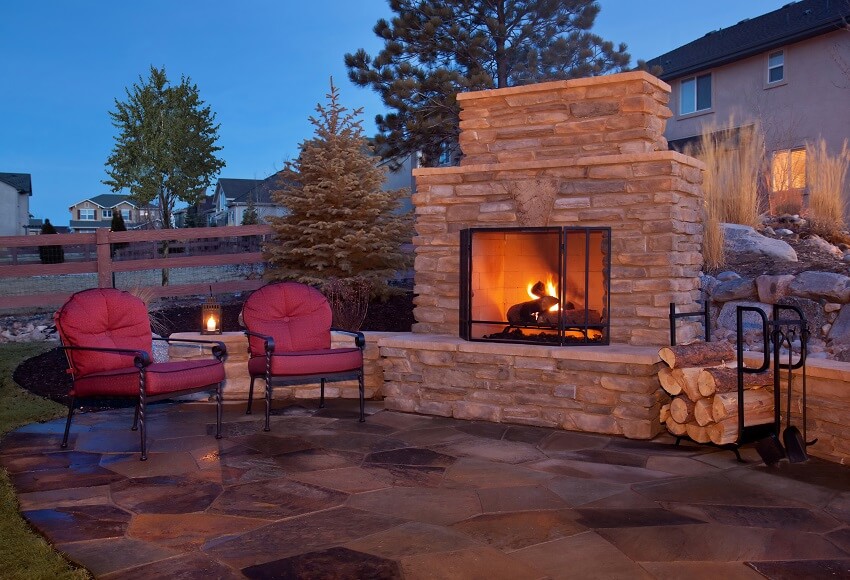
A lot of homeowners seal their flagstone patio after the complete installation to protect it against cracking and breaking. Flagstone is made of granite, sandstone, bluestone, limestone, or slate. And yes, they are all prone to staining. But sealing them, however, will prevent them from getting stains.
Generally, the sealer is composed of penetrating acrylic with a flat finish. That is to prevent the material from absorbing water. Some homeowners, on the other hand, use sealers that have a glossy finish, but that could compromise the natural appearance of the stone.
However, the seal should fill the pores thoroughly to fully protect the flagstone patio. Check our guide to the types of patio covers that could add protection to your stone patio from absorbing water.
Sealing Flagstone Pros
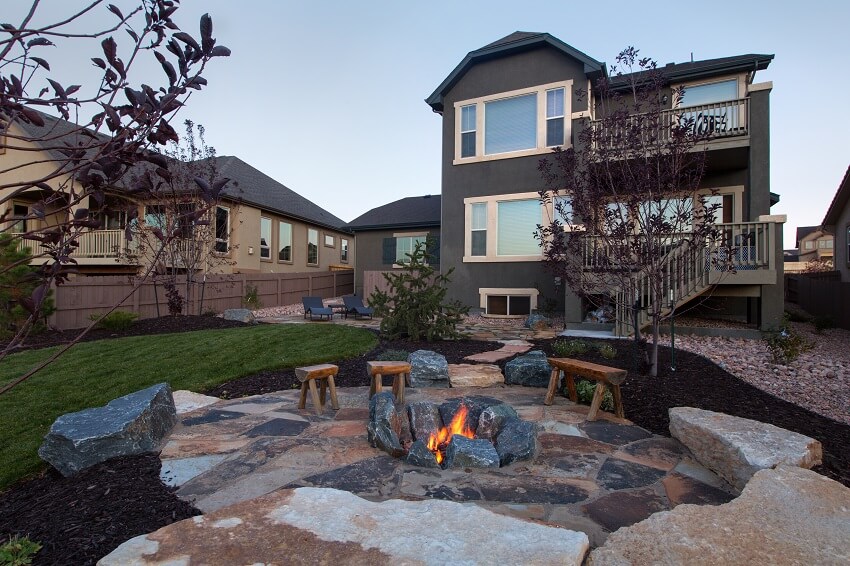
Protection against stains
Flagstone can be susceptible to stains, especially when it is installed outdoors. When left unsealed, it can easily accumulate dirt and mold.
However, when it is sealed, these problems would be prevented. Sealing your flagstone can provide great protection against staining, making it look naturally appealing at all times.
Prevention against spalling
Coating your outdoor stone pavers with a sealer can help in preventing spalling. The water causes the minerals in the stones to weaken and break over time.
However, a high-quality sealer can restrain the water from getting into the underneath surface of your stones and causing damage.
Protects the natural texture of the flagstone
Aside from the appearance of the flagstone, another feature of it that we want to protect is its natural texture.
If you want to maintain a non-skid texture on your stone surfaces, you can use a matte sealer. Some sealers are infused with penetrating acrylic so that moisture will be prevented.
To maintain the natural appeal, you can seal it twice or thrice a year to maintain its beauty and texture.
Sealing Flagstone Cons
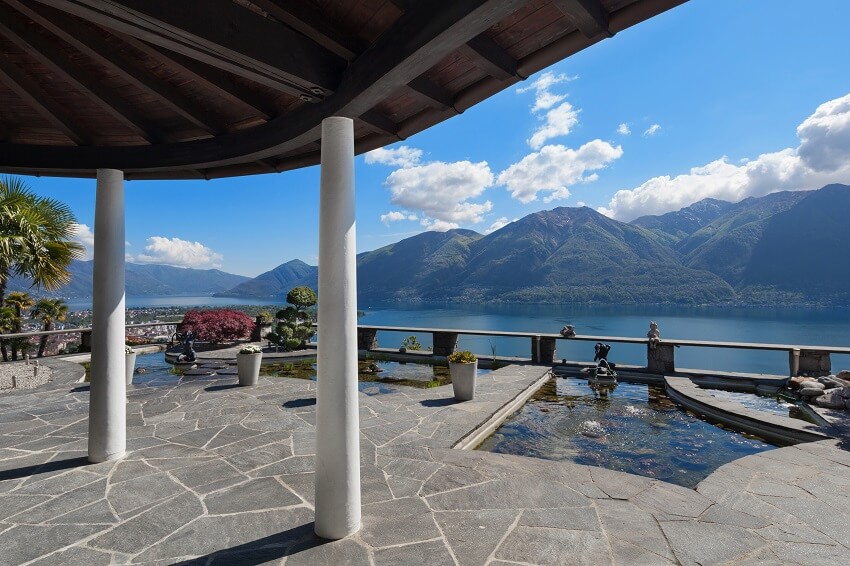
Sealing could potentially trap moisture
Even if flagstone is sealed, excessive flow of water, such as heavy rainfall, can still find its way to access the stone. Most probably, it will get into the stone through underneath.
Once the water reaches inside, the moisture will be trapped, and it will not evaporate as the top surface is sealed. This will result in mold growth underneath the seal, which can possibly damage the stone pavers. Moreover, it can cause the top layer to flake, peel off, and crack over time.
The wrong type of seal can make the flagstone surface slippery
A seal with a glossy finish can make the surface slippery, which makes it dangerous for people to walk on as they might slide and fall. That is why it is always important to ensure you choose a matte finish seal.
How to Seal Flagstone
Here are the steps for sealing a flagstone patio:
| Step | Action |
|---|---|
| Clean Patio | Remove debris using a pressure washer or stone cleaner. |
| Repair Damages | Repair cracks with patching compound and reset loose stones using mortar. |
| Dry the Patio | Completely dry and wait at least 24 hours. |
| Choose Sealer | Use a sealer for the flagstone. ( Enhancing or natural look) |
| Test Sealer | Apply sealer to a small area to test for discoloration. |
| Apply Sealer | Apply the sealer evenly across with a roller, brush, or sprayer. |
| Add 2nd Coat | If needed, apply a second coat depending on how porous the stone is. |
| Dry & Cure | Let the sealer dry and keep off the surface for 24-48 hours. |
| Maintenance | Cleaning regularly, and reseal the patio every 2-3 years. |
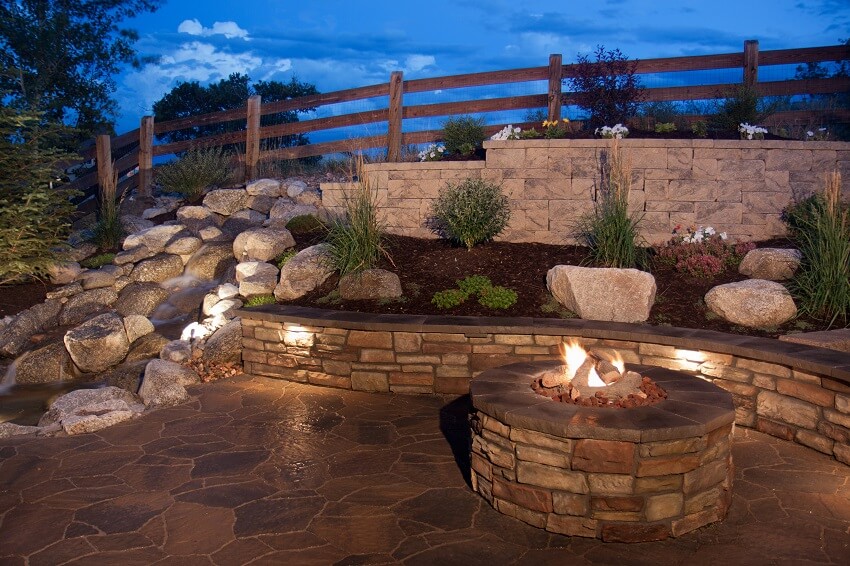
Make sure to clean the flagstone first with a pressure washer.
Let the surface completely dry. No drops of water should be left on the surface; otherwise, the seal might trap moisture.
Once the flagstone surface dries, start applying 1 to 2 coats of sealer. This will be the first coating you will do before applying grout. Let it dry for 1 day.
Once the first layer of seal dries, ascertain that it’s thoroughly clean first, then start applying the grout onto the surface.
Make sure to grout according to the instructions by its manufacturer. However, some sealers can already work as grout. If this is the case, you can put a second layer of your seal instead and wait for 1 day to let it fully dry.
After letting the grout dry for 1 day, clean the surface first and apply the final layer of seal above the flagstone and grout.
Apply an abundant amount of the penetrating sealer to the whole stone surface. Let it dry for 1 day.
Once the final coating fully dries, preventing too much walking or stepping on the surface is best. Yes, the sealer is already dry, but it’s not that hard already. Its curing and hardening process will take 10 to 15 days.
How Often To Seal Flagstone

Generally speaking, flagstone is resealed every 3 to 4 years. But it will still depend on the stone’s quality and how you sealed it. If the stone is not sealed properly, the possibility of moisture or mold buildup would be high.
If you notice unwanted elements, such as flakes or mold in some areas, that’s a sign that you have to seal your flagstone once a year. You need to seal the whole surface to prevent any problems properly.
Best Flagstone Sealer

Silane Siloxane Sealer
This is a type of penetrating sealant that powerfully repels water, and it works best on flagstones that are installed indoors or outdoors. They create a highly resistant barrier within the pores of the stone.
This sealer can also resist stains and protect the flagstone from mold, mildew, harsh chemicals, and UV rays. This extends the longevity of the paving stones.
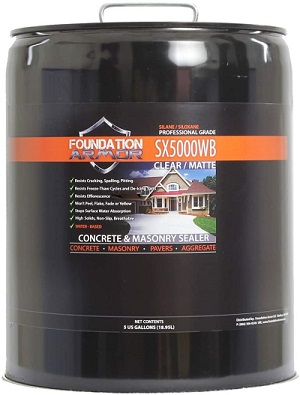
SX5000 WB DOT Approved Water Based Silane Siloxane Penetrating Concrete Sealer and Siloxa-Tek 8500 Penetrating Concrete Sealer are some of the best silane siloxane sealers you can try for your stone patio, pool decks, or walkways.
Natural Stone Sealer
This type of sealer can protect your flagstone against water, oil, and other porous chemicals. Aside from maximum protection, it also maintains the natural appeal of the stones. It is suitable for both indoor and outdoor uses and provides a non-skid matte texture.
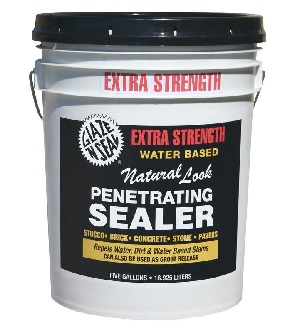
Glaze ‘N Seal Clear Extra Strength Penetrating Sealer is one of the most recommended natural stone sealers in the market as it is superior in terms of protecting your flagstone against harsh elements while maintaining its natural beauty.
Flagstone Sealer For A Wet Look

To make your flagstone achieve a wet look, you can use an acrylic concrete sealer. This type of sealer is normally used to seal concrete. It is also used for stones as it provides a glossy, wet finish.

Acrylic sealers are excellent for providing a protective and durable finish. However, before using the product you bought, make sure to check its instructions first to determine if it is compatible with flagstones.
EnduraSeal 100% Acrylic” Wet Look” Semi-Gloss Concrete Sealer is a superior acrylic concrete sealer that provides a wet-look flagstone surface.
Should You Seal Flagstone Around The Pool?
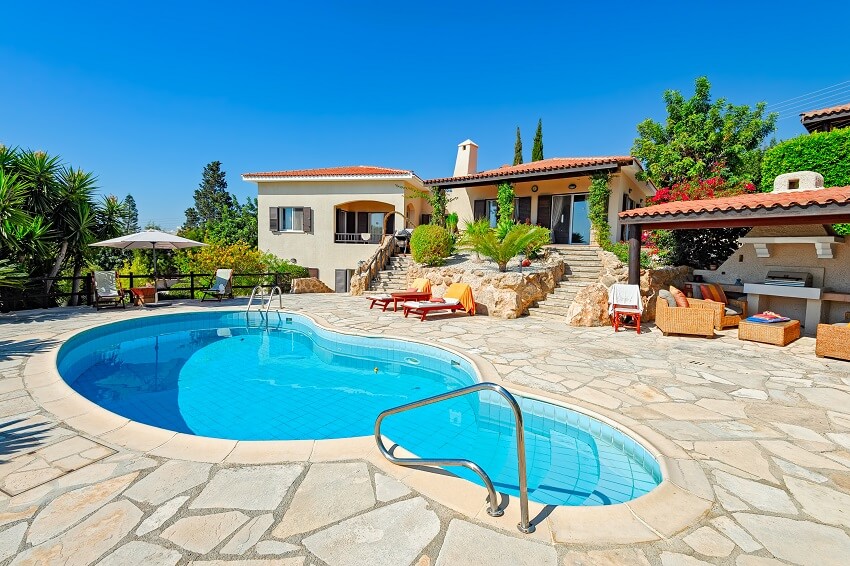
Ideally, you should seal the flagstone around the pool. Proper sealing will protect your stone pool deck against moisture. The paving stones around the pool are highly susceptible to moisture since it is in persistent contact with water. Check out the best natural stone pool deck design ideas here.
However, it is highly recommended that you seal the flagstone around the pool with more than three layers to ascertain that no water will penetrate and cause staining. Moreover, you must ensure that you properly seal the whole surface.
Do not leave any small areas unsealed, as it might cause worse problems. This could lead to a huge moisture buildup inside the stones. Yes, sealing flagstone around the pool is very important, but the sealing process must be done carefully and thoroughly.
For more related articles on sealing, visit the pros and cons of sealing pavers.




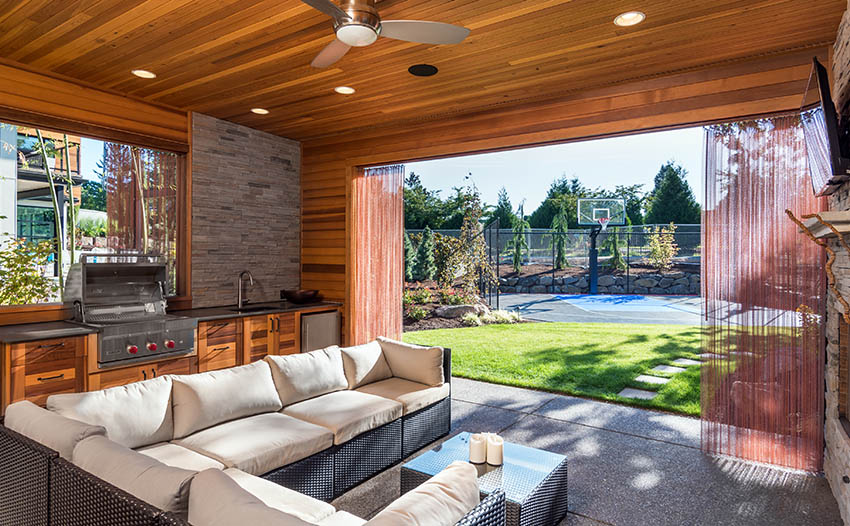


I used a sealer on my flagstone that when it aged started turning white and peeling. I don’t want to make that mistake again. Many of the sealers I looked at were milky white when applied. Is there a product that will not eventually turn white and peel?
Hi Ralph, that’s a great question. This usually happens when ‘efflorescence’ natural salt in the stone coming out, or moisture gets trapped under the sealer, or with low quality sealant products. If you sealed the stone immediately after installation the leaching problem can sometimes occur.
If its moisture using a breathable sealer product you may be able to avoid this from happening. Unfortunately, you need to remove the old sealer product to redo the application. This usually requires using a sealer stripper and a wire brush or pressure washer to be able to clean it up so you can apply a new product. EnrichNSeal is a product often recommended to bring out color in flagstone and seal it. Always test a small out of the way piece before you redo the entire patio. Best of luck.